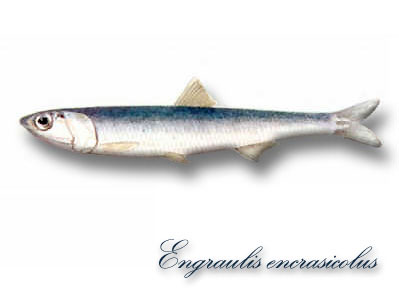Anchovy essence
Anchovy essence once was a mainstay of larders throughout the anglophone world but has become difficult to obtain in the United States. The only British producer available, and then only at a handful of shops or online, is George Watkins which fortunately sells a good product. It also is fortunate, and fun, that as William Kitchiner and his Romantic recipe from 1817 indicate, you can brew your own.
From The Cook’s Oracle:
“QUINT-ESSENCE OF ANCHOVY
….Put ten or twelve Anchovies into a mortar, and pound them to a pulp;--put this into a very clean iron or silver, or very well tinned saucepan, then put a tablespoonful of cold spring water into the mortar, shake it round, and pour it to the pounded Anchovies, set them by the side of a slow fire, very frequently stirring them together, till they are melted, which they will br in the course of five minutes. -- Now stir in a quarter of a drachm of Good Cayenne pepper…, and let it remain by the side of the fire for a few minutes longer; then, while it is warm, run it trough a hair sieve, with the back of a wooden spoon.”
Notes:
Other than the ‘drachm,’ a measure equal to an eighth of a teaspoon, the Kitichiner recipe requires little modern interpretation. You could use a small food processor instead of the mortar and pestle but the process of mashing the anchovy is so quick and simple that it is not worth the additional clean to resort to the processor. A fine mesh strainer will do if you lack a hair sieve, which was made with ‘haircloth’ fashioned from camel or horsehair.
As a postscript to his recipe for “quint-essence” Kitchiner notes that “Essence of Anchovy” is sometimes made with Sherry or Madiera wine, or good Mushroom catsup…, instead of water. If you like the acid flavour, add a little citric acid, or dissolve them in good Vinegar.” He warns his reader not to substitute lemon unless the sauce is intended for immediate use because it will spoil quickly.
Our own version is based on a recipe from Maxine de la Falaise:
- a 3.35 oz jar of anchovies packed in olive oil
- 1 Tablespoon malt vinegar
- 1 Tablespoon water
- 1 teaspoon lemon zest
- ¼ teaspoon cayenne

- Drain the anchovies and mash them to a rough pulp; a fork or teaspoon is the only tool you need.
- Put the pulped fish into a small pot with the other ingredients and simmer the mixture until very nearly dry.
- Push the essence through a wire strainer and pack it into a jar just big enough to hold it.
Notes:
- Keep the essence in the fridge; even though it is a preserve of itself, it will keep longer there.
- You can use a like amount of canned anchovies; they do not seem, not quite, as good as those from the jar.
- De la Falaise uses wine vinegar instead of our malt. She also specifies less peel and cayenne; proportions are up to you.
- Apparently unknown to Miss de la Falaise, Apicius himself probably never existed, but that is a tale for another time. We are, we know, such teases here at britishfoodinamerica.
- In Unmentionable Cuisine (Charlottesville 1979), Calvin Schwabe describes an anchovy sauce for service with “any roasted viscera of lamb. The sauce works equally well with roast leg or grilled chops. To make unmentionable anchovy sauce, add “chopped, desalted and trimmed anchovy fillets and pepper, chopped parsley, and lemon juice to the degreased pan drippings. Blend this sauce well over medium heat.” (Schwabe 282) To ‘desalt’ the anchovies just rinse them; they are not likely to require ‘trimming.’ For beefsteak, start by deglazing the debris with a splash of red wine. Let it nearly evaporate, then follow Schwabe’s recipe but skip the lemon juice and add enough mashed canned tomato (San Marzanos from Italy are best) instead, for simmering until you get a consistency that you like. We think it should be thick.

